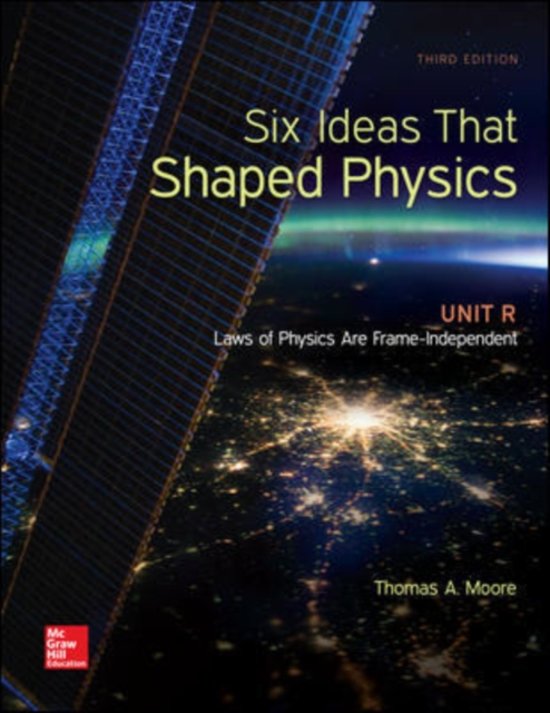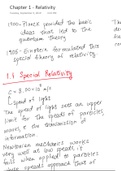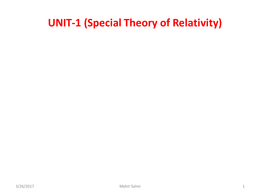Galilean transformation Study guides, Class notes & Summaries
Looking for the best study guides, study notes and summaries about Galilean transformation? On this page you'll find 8 study documents about Galilean transformation.
All 8 results
Sort by

-
Praxis - Physics Content Knowledge 5265 Test Prep Questions and Answers
- Exam (elaborations) • 5 pages • 2024
-
- $9.49
- + learn more
Vector A quantity that has magnitude and direction (displacement, acceleration, force, momentum, velocity, current, etc.) Circular Motion any motion in which an object is moving along a curved path (composed of centripetal, tangential, & angular acceleration) Centripetal Acceleration acceleration of an object toward the center of a curved or circular path Tangential Acceleration the instantaneous linear acceleration of an object directed along the tangent to the object's circular path ...
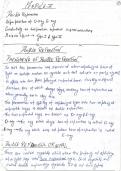
-
Engineering Physics Notes for all branches of 1st year
- Class notes • 28 pages • 2023
- Available in package deal
-
- $8.49
- + learn more
The given notes are for the B.Tech. Engineering Physics subject for the 1st year. The notes cover the following topics: 1. Double Refraction 2. E-ray and O-ray and all their cases 3. Conductivity of semiconductor 4. Special theory of Relativity 5. Galilean Transformation Equation,: with all conditions, cases and failures 6. Inverse Kinematics 7. Lorentz Transformation: with all conditions and cases 8. Length Contraction 9. Time Dilation and its concepts 10. Velocity Addition The...
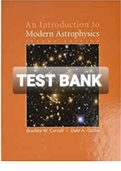
-
Exam (elaborations) TEST BANK FOR An Introduction to Modern Astrophysics By Carroll B.W. and Ostlie D.A. (Solution manual)
- Exam (elaborations) • 226 pages • 2021
-
- $15.49
- + learn more
Exam (elaborations) TEST BANK FOR An Introduction to Modern Astrophysics By Carroll B.W. and Ostlie D.A. (Solution manual) CHAPTER 1 The Celestial Sphere 1.1 From Fig. 1.7, Earth makes S=P˚ orbits about the Sun during the time required for another planet to make S=P orbits. If that other planet is a superior planet then Earth must make one extra trip around the Sun to overtake it, hence S P˚ D S P C 1: Similarly, for an inferior planet, that planet must make the extra trip, or S ...
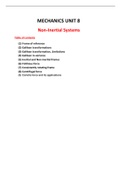
-
MECHANICS UNIT 8 Non-Inertial Systems
- Presentation • 4 pages • 2022
-
- $5.49
- + learn more
MECHANICS UNIT 8 Non-Inertial Systems Table of contents (1) Frame of reference (2) Galilean transformations (3) Galilean transformation, Limitations (4) Galilean in-variance (5) Inertial and Non-inertial frames (6) Fictitious force (7) Consistently rotating frame (8) Centrifugal force (9) Coriolis force and its applications
Summary of 'Six Ideas that Shaped Physics' by T.A. Moore, chapters R1 and R2 on: the principle of relativity, Galilean transformation equations, spacetime diagrams, synchronising clocks. Hand-written summary.
Modern Physics [Serway, Moses, Moyer] Notes on Chapter 1 - Special Relativity
Theory of relativity

-
Special Theory Of Relativity Full Notes
- Class notes • 48 pages • 2023
-
- $110.49
- + learn more
The Special Theory of Relativity, formulated by Albert Einstein in 1905, revolutionized our understanding of space and time. It posits two fundamental principles: the constancy of the speed of light and the principle of relativity, stating that the laws of physics are the same for all observers in uniform motion. This theory introduces the concept of time dilation, where time slows down for objects in motion relative to a stationary observer. It also explains the famous equation E=mc^2, linking ...

$6.50 for your textbook summary multiplied by 100 fellow students... Do the math: that's a lot of money! Don't be a thief of your own wallet and start uploading yours now. Discover all about earning on Stuvia


